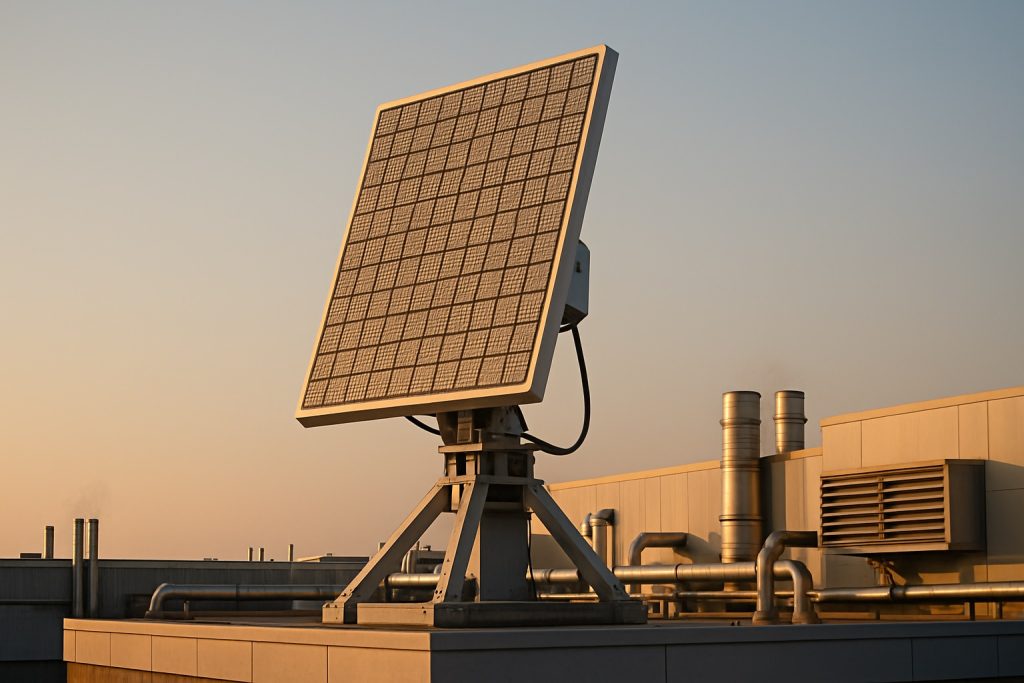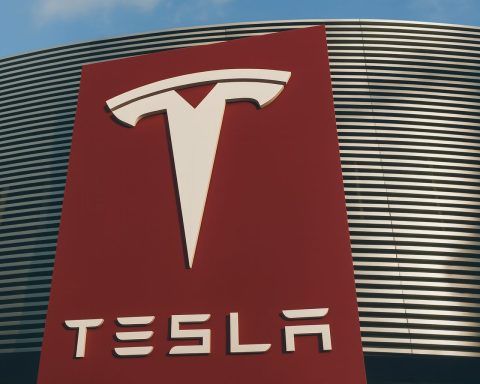- In the first five months of 2025, China added 198 GW of solar and 46 GW of wind, including a May surge of 93 GW solar and 26 GW wind, lifting total solar capacity to 1,080 GW.
- A June 2025 federal court overturned the freeze on the NEVI program, unfrozing about $1 billion in charging funding across 14 states.
- By May 2025, global EV sales reached 7.2 million, up 28% year over year.
- BYD Auto became the world’s top seller of battery electric vehicles in Q1 2025, with a 39% surge in sales and overtaking Tesla.
- LG Energy Solution began ramping up production of Tesla’s high-capacity 4680 cells starting in June 2025.
- CATL aims to have 1,000 battery swap stations in China by the end of 2025, then expand to Europe.
- ABO Energy opened a 5 MW green hydrogen facility in Germany in June 2025 capable of producing about 450 tonnes of hydrogen per year.
- Suntory plans a 16 MW green hydrogen plant in Japan to power distilleries, online in 2025 and fully in 2027.
- Global energy investment in 2025 is projected at $3.3 trillion, with clean energy receiving about $2.2 trillion.
- The European Union confirmed a 2035 ban on new internal combustion engine car sales and tightened 2025–2030 CO2 standards to push higher EV shares.
Introduction
Green technology is experiencing rapid growth in 2025, driven by record investments, technological breakthroughs, and supportive (if sometimes turbulent) policy landscapes. As of June 2025, clean energy sectors like solar, wind, and hydrogen are breaking installation records, while electric vehicle (EV) adoption accelerates worldwide. This report provides a comprehensive overview of the latest trends in clean energy and EVs, including current news (June 2025), key developments in technologies and infrastructure, government policies across major regions, expert insights, market forecasts, and profiles of leading industry players. All information is sourced from recent reputable reports and news, ensuring an up-to-date global perspective.
June 2025 Highlights in Green Tech
Several major announcements and news in June 2025 underscored the momentum – and challenges – in green technology:
- China’s Renewable Energy Record: China added an unprecedented 198 GW of solar and 46 GW of wind capacity in the first five months of 2025, propelling its total solar capacity above 1 terawatt (1,080 GW) [1] [2]. In May alone, China installed 93 GW of solar (nearly 100 solar panels per second at May’s pace) and 26 GW of wind, a monthly record [3]. This massive build-out is roughly equivalent to the entire electricity capacity of a country like Turkey or Indonesia [4].
- U.S. Policy Uncertainty and Project Cancellations: In the United States, federal policy swings are impacting green investments. In May 2025, roughly $1.4 billion in planned U.S. clean energy factories and projects were canceled or put at risk due to uncertainty over tax credit rollbacks [5] [6]. By May, total canceled or delayed investments in 2025 had reached $15.5 billion, including solar panel, battery, and EV manufacturing facilities that would have created 12,000 jobs [7]. This reflects the fallout from efforts in Congress to curtail incentives (such as ending or altering the Inflation Reduction Act’s subsidies), causing companies to hit pause on new factories.
- EV Charging Infrastructure Back on Track: A legal battle in the U.S. ended with a win for EV infrastructure. The new administration’s attempt to freeze a $5 billion national EV charging program (NEVI) was overturned by a federal judge in June 2025. The court’s injunction unfroze about $1 billion in charger funding across 14 states, allowing projects to resume and expanding the nation’s fledgling charging network [8] [9].
- Electric Vehicle Sales Surge: EV sales worldwide continued to break records. By the end of May 2025, global EV sales reached 7.2 million units, up 28% from the same period in 2024 [10] [11]. The International Energy Agency (IEA) projects total EV sales for 2025 could exceed 20 million, capturing more than a quarter of the global auto market [12]. BYD Auto (China) jumped to the #1 spot in global battery EV sales in early 2025, overtaking Tesla, which saw a year-over-year decline in sales [13] [14].
- New EV Models and Tech Unveiled: Automakers are rolling out dozens of new electric models in 2025. For example, Tesla launched refreshed versions of its Model S and X in June and is expected to introduce a lower-cost “Model Q” by mid-2025 [15]. European and Asian brands likewise plan affordable EVs (e.g. Volkswagen’s ID.2 city car, Renault’s electric 4, and others), many boasting longer ranges or faster charging. Battery innovation also made news – e.g. LG Energy Solution ramped up production of advanced 4680 cells for Tesla, and CATL announced plans to bring its battery swap technology (pioneered in China) to Europe [16] [17], potentially making EV refueling as quick as a gasoline fill-up.
- Hydrogen and Clean Fuels Developments: Green hydrogen saw both progress and setbacks. In Germany, ABO Energy opened a new green hydrogen production and refueling facility (5 MW electrolyzer powered by wind) in June, capable of producing ~450 tons of H₂ per year [18]. Conversely, steelmaker ArcelorMittal hit pause on a €1.3 billion plan to decarbonize two steel plants with hydrogen, citing high energy costs and uncertainty despite government subsidies [19]. Meanwhile, Japan’s Suntory announced plans to build the country’s largest green hydrogen plant (16 MW) to power distillery operations by 2027 [20]. These highlight the growing interest in hydrogen for industry and transport, alongside the economic challenges that still exist.
The above events set the stage for a deeper dive into the clean energy sector and the electric vehicle industry, followed by a look at policy landscapes, expert perspectives, market outlook, and key players shaping the green tech revolution in 2025.
Clean Energy Developments in 2025
Renewable Power: Solar and Wind Lead the Way
Renewable energy capacity worldwide is expanding at a record pace in 2025, with solar photovoltaic (PV) and wind power at the forefront:
- Solar Power Boom: Solar energy investment and deployment have reached all-time highs. The IEA reports that solar PV is attracting more capital than any other energy technology in 2025, with investment expected around $450 billion this year [21]. This makes solar the single largest item in global energy investment. The surge is most visible in China – which alone installed nearly 198 GW of solar in just Jan–May – pushing China’s total solar capacity above 1 TW (a tenfold increase since 2017) [22] [23]. By May, solar accounted for almost 30% of China’s entire power capacity, reflecting 56.9% year-on-year growth [24]. Analysts attribute China’s installation spree to supportive policies (e.g. incentives for distributed solar and renewable energy market trading) and a rush to finish projects before policy changes in the latter half of 2025 [25]. Elsewhere, solar deployment continues steadily: Europe logged record solar generation in early 2025 (with countries like Germany and the UK hitting new solar output peaks), and emerging markets are adding PV capacity as costs fall. However, the solar boom has also led to intense price competition – China’s top solar manufacturers reportedly sold panels at or below cost in Q1 2025, with industry insiders warning of a “death cycle” of slim margins despite huge volumes [26]. For consumers and climate goals, though, cheaper solar is a boon, accelerating the shift to clean electricity.
- Wind Power Growth: Wind energy, both onshore and offshore, is likewise expanding, albeit facing some headwinds. China installed 46 GW of wind in the first five months, alongside its solar surge [27]. Globally, wind investments remain strong as many countries seek to tap high-capacity wind resources. Europe continues to lead in offshore wind – the North Sea and Baltic projects are growing – and the U.S. saw its first large offshore wind farms under construction. But the wind sector has encountered challenges: supply chain issues and rising material costs have squeezed turbine manufacturers’ profits, and some high-profile offshore projects (in the US and UK) struggled with cost inflation. Despite these hurdles, new installations in 2025 keep setting records. In May, China’s 26 GW monthly wind addition was unprecedented [28], and nations from Vietnam to Brazil are adding onshore wind farms. The upshot: wind power is on track to remain a crucial pillar of clean energy, though industry players are pushing for policy support to stabilize growth.
- Grid and Integration: A critical aspect of the renewables boom is integrating these sources into power grids. The IEA warns that grid investment (about $400 billion a year) is not keeping pace with generation investment [29]. Upgrades to transmission, distribution, and energy storage are urgently needed to ensure reliability as wind and solar supply a larger share of electricity. Some positive developments include big battery installations coming online (for example, RWE’s new grid-forming battery energy storage system in the Netherlands to support grid stability [30]) and legislative efforts to streamline grid permitting in regions like the EU. But overall, grid infrastructure is a noted bottleneck – maintaining electricity security will require significantly higher grid spending by the early 2030s to match the “Age of Electricity” demand [31] [32].
Energy Storage and Battery Technology
Energy storage technology is advancing rapidly to complement renewables and electrify transport:
- Investment in Storage: Global investment in battery energy storage is set to exceed $65 billion in 2025, reflecting a sharp rise in spending on grid batteries, home storage, and EV batteries [33]. This is a rapid climb from just a few years ago, driven by the need to buffer intermittent solar/wind output and by the EV boom (since battery factories for EVs overlap with storage tech). Multiple large-scale battery projects have been commissioned in 2025. For instance, a new 30 MW wind+battery hybrid project went live in Finland to enhance grid flexibility [34]. Utility-scale storage deployments are growing in the U.S., Europe, and Australia, often with government support or market reforms that reward fast-response storage for grid services.
- Battery Innovations: On the technology front, companies are racing to improve battery performance. Solid-state batteries, which promise higher energy density and faster charging, are moving closer to commercialization – Toyota, Nissan, BMW and others have R&D programs aiming for late-decade rollouts (with prototypes by 2025-2026). In the nearer term, manufacturers are scaling up production of advanced lithium-ion cells. For example, LG Energy Solution plans to ramp up production of Tesla’s high-capacity 4680 cells starting in June 2025, which could enable EVs with longer range [35]. Chinese battery giant CATL is innovating beyond cell chemistry by pushing battery swapping infrastructure (standardized removable EV battery packs). CATL aims to have 1,000 swap stations in China by the end of 2025, then expand the model to Europe in partnership with automakers [36] [37]. If successful, such systems can recharge EVs in minutes by simply exchanging batteries, potentially accelerating EV adoption in markets where charging speed is a concern.
- Supply Chain and Capacity: The battery supply chain is globalizing. China currently dominates battery production (CATL alone holds ~43% of the EV battery market as of May [38]), but huge new factories are being built elsewhere. Europe’s Northvolt, America’s Tesla/Panasonic and GM/LG joint ventures, and South Korea’s SK Innovation are all ramping up gigafactory capacity. By the end of 2025, global lithium-ion manufacturing capacity is expected to double compared to a few years ago [39], easing shortages. However, securing critical minerals (lithium, nickel, cobalt) remains a strategic focus – mining and processing projects, along with recycling initiatives, are part of the green tech trend to ensure batteries remain sustainable and affordable.
Hydrogen and Clean Fuels
Hydrogen has emerged as a key pillar for decarbonizing sectors that electricity alone can’t easily reach (like heavy industry, long-haul transport, and seasonal energy storage):
- Green Hydrogen Scale-Up:Green hydrogen (H₂ produced from renewable-powered electrolysis) is gaining traction in 2025. Governments and companies worldwide announced projects to expand electrolyzer capacity. In Japan, beverage giant Suntory plans a 16 MW power-to-gas plant to produce green hydrogen, coming online in 2025 and reaching full use by 2027 [40]. This hydrogen will partly fuel its distillery operations and local industries, showcasing a private-sector push into H₂ as a clean fuel. In Europe, new laws are encouraging hydrogen’s role: Germany drafted regulations (aligning with the EU’s Renewable Energy Directive III) setting targets for green hydrogen content in transport fuels, ramping from 0.1% in 2026 to 12% by 2040 [41]. Such mandates give investors confidence that demand for H₂ will grow in refining, trucking, aviation and more.
- Projects and Infrastructure: Multiple pilot projects reached milestones. ABO Energy’s 5 MW green hydrogen facility in Germany opened in June, pairing an electrolyzer with a wind turbine to generate ~450 tonnes of hydrogen annually and fuel a hydrogen refueling station [42]. This kind of integrated project (renewable + H₂ production + fueling) is a template for local hydrogen hubs. On the heavier end, Linde announced a $400 million air separation unit to support a large blue ammonia plant in Louisiana (blue ammonia being a way to transport hydrogen in chemical form); the plant will produce 1.4 million tons per year by 2029 for fertilizer or fuel use [43]. Even aviation is exploring hydrogen – e.g., UK’s ZeroAvia secured government funding in June for testing liquid hydrogen fuel systems on a regional aircraft [44], aiming for zero-emission flight.
- Challenges – Economics and Delays: Despite momentum, hydrogen faces challenges. Notably, ArcelorMittal’s decision to halt its €1.3 billion hydrogen-based steel plant conversions in Germany (even rejecting public subsidies) sent a cautionary signal [45]. The company cited high energy prices and market uncertainty, implying that without cheaper electricity or carbon pricing that favors green steel, such projects struggle financially. This underscores that green hydrogen is still more expensive than fossil alternatives in many cases. Additionally, the pace of building H₂ infrastructure (pipelines, storage, fueling stations) is just beginning. Nonetheless, most experts see hydrogen as indispensable for long-term climate goals, and 2025’s developments – both positive and negative – are helping define the path to scaling this technology in the late 2020s.
Other Clean Tech: Nuclear and Emerging Areas
While solar, wind, and batteries dominate headlines, other clean technologies are also advancing:
- Nuclear Energy: Nuclear power is receiving renewed attention as a stable, low-carbon energy source. Global investment in nuclear is expected to reach $75 billion in 2025, about 50% higher than five years ago [46]. Several countries (China, France, UK, India, etc.) have new reactors under construction. Notably, interest in small modular reactors (SMRs) is growing – in 2025, demonstration SMR projects and regulatory approvals (for designs by companies like NuScale or Rolls-Royce) are underway, aiming for deployment in the 2030s. Nuclear’s inclusion as “clean” in many policy frameworks (e.g., the EU’s taxonomy) has helped unlock funding. However, challenges remain with costs and timelines for large reactors. The uptick in nuclear investment, as the IEA notes, is part of a broader strategy by nations to ensure energy security and stable power as they reduce reliance on fossil fuels [47] [48].
- Energy Efficiency & Other Green Tech: Efficiency technologies and smart grids are quietly making an impact too. Buildings and industry are adopting more efficient HVAC, lighting, and processes – often facilitated by “Energy-as-a-Service” models (for example, U.S.-based startup Budderfly raised $100 million in 2025 to fund efficiency upgrades for small businesses at no upfront cost [49]). Meanwhile, electric heat pumps are replacing oil/gas furnaces in many markets (sales of heat pumps have been surging in Europe and North America since 2023), and electricity-based solutions (from induction stoves to electric arc furnaces) are gaining ground. These technologies don’t grab headlines like solar farms, but incremental improvements in efficiency are critical to meeting climate targets.
- Carbon Capture and Storage (CCS) and Biofuels also see ongoing developments. In 2025, several large CCS projects progressed (e.g., hubs in the North Sea for capturing industrial CO₂). Biofuels got a boost from partnerships like Eni and BMW testing advanced biofuels (HVO) in engines as a near-term decarbonization step [50]. And though not yet commercial, fusion energy research continues – private fusion startups in the U.S. and UK reported achieving higher plasma temperatures and raised significant venture funding, keeping alive the hope of a breakthrough in the coming decade.
In summary, the clean energy sector as of mid-2025 is marked by record-breaking growth in renewables and storage, coupled with heightened investment due to both climate commitments and energy security priorities. As IEA Executive Director Fatih Birol remarked, “amid geopolitical and economic uncertainties… energy security [is] a key driver of the growth in global investment this year to a record $3.3 trillion” [51], with clean energy technologies attracting twice as much capital as fossil fuels in 2025 [52]. The challenge ahead is to maintain this momentum, address bottlenecks (like grids and supply chains), and ensure new technologies like hydrogen become economically viable at scale.
Electric Vehicles and Sustainable Transport
EV Market Growth and Sales Trends
Electric vehicle adoption is accelerating globally in 2025, reaching new highs in market share and sales:
- Global Sales Surge: Over 20% of new cars sold worldwide are now electric, a figure that is rising each quarter [53]. In 2024, EV sales topped 17 million, and 2025 is on pace to go much higher. By May 2025, 7.2 million EVs (including battery-electric and plug-in hybrids) had been sold globally, a 28% increase over the same period a year prior [54] [55]. The IEA projects over 20 million EVs will be sold for the full year, potentially exceeding 25% of total light-duty vehicle sales [56] – a milestone in the transition away from gasoline. This growth is particularly impressive given that just five years ago, EVs were only around 3% of new car sales. The global EV fleet now stands around 60 million on the road, displacing over 1 million barrels of oil demand per day [57].
- Regional Dynamics: EV uptake varies by region, with China, Europe, and the U.S. leading in volume (see Table below). China is the undisputed EV powerhouse, accounting for the majority of global sales. In Jan–May 2025, Chinese consumers bought 4.4 million EVs, a 33% jump year-on-year [58]. China’s NEV (new energy vehicle) market hit 52.9% penetration in May – meaning over half of all cars sold in China that month were electric or plug-in hybrid [59]. Strong government incentives (like purchase tax exemptions and a 2024 vehicle trade-in subsidy program) and fierce competition among dozens of domestic automakers fuel this growth. Europe is the second largest EV market with 1.6 million sales through May (+27% YoY) [60]. Countries like Germany (+45%), Italy (+58%), and Spain (+72%) saw surging EV sales in early 2025, aided by new models and climate policies, while France experienced a temporary dip after trimming incentives [61]. North America (led by the U.S.) had ~0.7 million EV sales through May, a modest 3% increase YoY [62]. The U.S. market growth (4%) was slower than in 2024, partly due to subsidy uncertainty and supply constraints, whereas Canada’s EV sales fell in early 2025 after a popular rebate program paused [63]. Other regions (“Rest of World”) are emerging – for instance, EV sales in emerging Asian and Latin American markets collectively rose sharply and now make up a small but growing fraction of the global total.
Electric Vehicle Sales by Region (Jan–May 2025)
| Region | EVs Sold (Jan–May 2025) | YoY Growth (vs. 2024) |
|---|---|---|
| China | 4.4 million EVs | +33% [64] |
| Europe | 1.6 million EVs | +27% [65] |
| North America (US/Canada) | 0.7 million EVs | +3% [66] |
| Rest of World (est.) | ~0.5 million EVs | ~+40% (est.) |
| Global Total | 7.2 million EVs | +28% [67] [68] |
Sources: EV sales data from Jan–May 2025 reported by The EV Report, June 2025 [69] [70].
- Market Share Milestones: In key markets, EVs are rapidly approaching mainstream status. China’s EV share was nearly 50% of new cars in 2024 and continues to rise [71] [72]. Europe’s EV share varies by country (Norway remains highest at over 80%, while large markets like Germany, UK, France are in the 15–25% range), and the EU average is climbing steadily toward its 2030 goal of ~60%+. The U.S. lags with about 8–10% EV share in 2025, but certain states like California have crossed 20% and are pushing toward a full phase-out of gasoline car sales by 2035. Notably, outside the big three markets, EV adoption is also picking up – e.g. in 2024 other countries collectively sold 1.3 million EVs (close to the U.S. number) [73], and that trend continues in 2025 in places like South Korea, Australia, and India (where domestic EV startups are growing).
- Automaker Rankings and Competition: The competitive landscape of EV manufacturers is shifting as the market matures. BYD Auto, a Chinese automaker, became the world’s top seller of battery electric vehicles in Q1 2025, thanks to a 39% surge in sales [74]. BYD’s broad lineup of affordable EVs and hybrids for China and expanding exports have propelled it past long-time leader Tesla. Tesla, now the second-largest EV maker globally, saw a 13% drop in its Q1 2025 sales compared to the previous year [75] – attributed to intensifying competition and possibly the discontinuation of some U.S. tax credits on its models early in the year. Geely Holding (which owns brands like Geely, Volvo, Polestar) jumped to third place globally with +105% YoY growth [76], reflecting Chinese OEMs’ growing share of the pie. In Europe, legacy automakers are catching up: Volkswagen Group regained the top spot in European BEV sales in early 2025 [77], as new models from Audi, VW, Skoda, etc. gained traction. In North America, U.S. automakers like General Motors are expanding their EV lineups and collectively now account for a larger share of U.S. EV sales (GM was ~15% of U.S. EV sales in early 2025, second only to Tesla) [78]. Meanwhile, several EV-only startups and smaller players face a more challenging environment – some Chinese startups (e.g. Xpeng, Nio) are engaged in price wars, and U.S. startups like Lucid and Rivian are navigating production ramp-ups and financial losses. The consensus is that 2025 marks a more mature phase of the EV race, where only those who achieve cost parity and reliable production will thrive. As one industry analyst noted, “the shift to electric vehicles is still very much happening and we will still see growth over the next decade,” despite short-term uncertainties [79].
Technological Developments: Models, Batteries, and Charging
The remainder of 2025 will see a wave of new EV models, advances in battery technology, and expansion of charging infrastructure:
- Dozens of New EV Models: Automakers have slated a burst of EV launches for late 2025 to early 2026, ensuring consumers have more choices than ever. A few anticipated releases include: Tesla’s rumored Model Q (an entry-level EV around $25–30k, targeting a June 2025 debut) [80]; Volkswagen’s ID.2 compact EV (aimed at ~€25k price point) [81]; Renault 4 Electric, reviving a classic hatchback in modern EV form [82]; Ford Explorer EV (an electric SUV for Europe) [83]; Hyundai Ioniq 6 N, a 641-hp performance sedan due late 2025 [84] [85]; and the Porsche Macan EV and Audi Q6 e-tron in the luxury segment [86] [87]. In addition, facelifts and upgrades to popular models (Tesla’s refreshed Model 3 “Highland” and Model Y “Juniper” designs, GM’s electric Chevy Equinox and Blazer, etc.) are hitting showrooms. These new models generally boast improved range (many around 400–500 km per charge) and faster charging (800V architectures becoming more common for rapid DC charging). The flood of new entrants by end of 2025 is expected to further stimulate EV demand as consumers find an EV in every segment – from city cars to pickup trucks – and at more affordable prices than early EVs.
- Battery Range and Performance: Battery technology improvements are translating into longer-range and more efficient EVs. Many 2025 model EVs advertise ranges well above 300 miles (480 km) on a single charge, addressing “range anxiety” for mainstream buyers. This is partly due to incremental chemistry improvements (higher nickel chemistries, better battery management systems) and partly to automakers designing more efficient vehicles. Some companies are trialing lithium iron phosphate (LFP) batteries in mass-market models (cheaper and very durable, albeit slightly lower range) – for instance, Tesla and Ford use LFP for standard-range editions. On the high end, solid-state batteries remain in R&D but Nissan and Toyota have hinted at prototype solid-state EVs before 2028 [88] [89], which could eventually push ranges beyond 600 miles. Another trend is the focus on faster charging: many new EVs in 2025 support charging at 150–350 kW, allowing an 80% charge in ~20 minutes on high-power stations. Research into even faster charging (including experiments with 500+ kW charging for commercial vehicles, and improved cooling systems) continues, with some breakthroughs in battery design enabling 5-minute partial recharges (one June 2025 report highlighted a Fiat concept achieving a “fast five-minute recharge” using special high-C batteries) [90].
- Charging Infrastructure Expansion: The EV charging ecosystem is rapidly growing and evolving. Public charging stations – especially fast DC chargers – are being installed worldwide at an unprecedented rate, spurred by government funding and private investment. Europe already has an extensive network (over 400,000 public chargers) and is adding more (including ultra-fast hubs along highways), while the U.S. has earmarked billions (through the NEVI program and utility investments) to build out a national charging network. The legal decision in June 2025 to restore NEVI funds in the U.S. will unlock $5 billion for highway chargers, benefiting 14 states immediately [91]. Automakers themselves are teaming up on charging: for example, a coalition of BMW, GM, Honda, Hyundai, Kia and others announced plans to jointly deploy fast-charging stations (a network of thousands of chargers across North America) to rival Tesla’s Supercharger network, with first stations coming in late 2025. Tesla’s charging standard (NACS) made significant inroads – by 2025 many rivals (Ford, GM, Mercedes, etc.) agreed to adopt Tesla’s plug design and gain access to its Superchargers for their customers. This convergence towards a standard in North America promises to simplify charging access. In China, EV drivers enjoy one of the densest charging networks and innovations like battery swapping: as noted, Nio operates over 3,300 swap stations in China and is expanding in Europe [92], and CATL’s push to standardize swap batteries could further spread this model [93] [94]. Home and workplace charging also remain crucial – new building codes in some places (e.g. EU) require wiring for EV chargers in parking areas. Overall, while charger availability is improving, certain regions still face gaps (rural areas, developing countries), and the pace of charger installation must keep up with the millions of new EVs hitting the road. By the end of 2025, experts expect a significantly improved ratio of EVs-per-charger in leading markets, alleviating one of the last barriers to mass EV adoption [95].
Policy and Regulation Impacting EVs
Government policies worldwide continue to heavily influence the EV transition in 2025:
- United States: The U.S. entered 2025 with strong federal support for EVs (the 2022 Inflation Reduction Act’s consumer tax credits and factory incentives) but saw a shift with the new administration in January 2025. The administration of President Donald Trump moved to roll back electrification targets and subsidies – for instance, proposing to terminate the 30% federal solar tax credit by end of 2025 and to modify or end EV purchase credits [96]. This created uncertainty; EV tax credit eligibility became more restrictive (based on North American battery content rules), and some consumers rushed purchases in early 2025 fearing incentives would vanish [97]. However, political realities are complex: many EV and battery factories (and the jobs they bring) are in Republican-represented states. By June, some Senate Republicans appeared to reconsider outright cuts – discussing possibly extending certain clean energy credits instead [98]. The legal fight over charger funding (noted above) also indicates pushback from states in favor of EV infrastructure. Separately, U.S. regulators at the EPA proposed stringent emissions standards for 2027+ vehicles (announced in April 2025) that effectively require a large share of new cars to be zero-emission to meet fleet-wide pollution limits – this is viewed as an indirect EV mandate, though its fate may hinge on political and legal outcomes. At the state level, California and at least a dozen other states are sticking with plans to ban sales of new gasoline cars by 2035, and in the near term, states like California, New York, and others have generous EV rebates and investments in charging. In summary, U.S. policy in 2025 is a mixed picture: federal support became uncertain, yet many pro-EV policies remain, creating what analysts called a potential “reset year” for the U.S. EV market [99] if consumers and automakers take a cautious approach awaiting clarity. Still, the long-term direction – backed by automakers’ own electrification commitments – suggests growth will continue, albeit possibly slower than it could be under stable incentives.
- Europe: The European Union and individual European governments are by and large maintaining an aggressive pro-EV and clean energy stance. The EU’s CO₂ emissions standards for cars are tightening in 2025–2030, pushing manufacturers to sell ever-higher shares of EVs or face steep fines [100] [101]. Indeed, EU regulation is a key reason why automakers have dozens of EV models hitting the market now – to meet the 2025 and 2027 fleet average CO₂ targets. Moreover, the EU confirmed a 2035 ban on new ICE (internal combustion engine) car sales, which is shaping investments across the industry. To support adoption, many European countries offer incentives (though some have tapered them down as EVs gain market share): e.g. Germany in 2025 shifted its subsidy focus to commercial EV fleets and charging infrastructure rather than private car rebates [102]; France introduced an EV leasing program at €100/month for low-income households; and Eastern European nations are starting to implement tax breaks for EV imports. On infrastructure, the EU’s Alternative Fuels Infrastructure Regulation (adopted 2023) mandates minimum charger deployment along highways and in cities by set dates, and funding from programs like Connecting Europe Facility is being allocated to build thousands of fast chargers. Renewable energy policy in Europe also directly impacts green transport – e.g., the RED III directive sets targets for renewable content in transport fuels (including a role for green hydrogen and e-fuels as seen in Germany’s draft law) [103]. Additionally, Europe is investing in its own battery and EV supply chain (the EU Green Deal Industrial Plan aims to rival U.S. and Chinese subsidies). However, a June 2025 analysis warned that Europe might be “underestimating” competition from the Global South in clean tech manufacturing, citing that over-regulation and slower permitting could leave Europe behind in solar, battery, and hydrogen industries [104]. Policymakers are aware of this and have been streamlining rules for new factories. In sum, Europe’s regulatory environment in 2025 strongly favors green tech adoption – automakers have clarity that EVs are the future in Europe, and governments are working on the supporting framework (even as they balance industrial policy concerns).
- China: China’s government continues to heavily promote green tech as a strategic industry. After phasing out direct EV purchase subsidies in 2022, China pivoted to other measures: extending tax exemptions on EVs (through 2027) and implementing programs like the NEV trade-in incentive in 2024 (which offered consumers up to ¥20,000 (~$2,750) to scrap an old car and buy an EV) [105] [106]. These policies have been very effective – over 6.6 million car buyers took advantage of the trade-in scheme in 2024, 60% of whom chose EVs [107]. In 2025, China extended some of these tax breaks to keep the market momentum. On the manufacturing side, China’s 14th Five-Year Plan for Renewable Energy is driving massive investments (hence the 388% jump in solar installations early 2025) [108], and the government’s strong support for domestic EV makers (through measures like localized credit systems, support for charging infrastructure, and protection from some foreign competition) continues. Local air quality goals also motivate city-level policies: dozens of Chinese cities have license plate restrictions that favor EVs (e.g., Shenzhen only issues new plates to EVs now), effectively compelling urban buyers to go electric. One evolving area is export and trade: as Chinese EVs flood global markets, some regions (Europe, US) have contemplated tariffs or requirements citing “competitive imbalance” or human rights in supply chains. In 2025, the EU launched an anti-subsidy investigation into Chinese EV imports, which could lead to tariffs – a move China criticised. Despite such tensions, Chinese EV and battery firms are expanding abroad (CATL building battery plants in Europe, BYD and Nio entering new car markets). Domestic policy, meanwhile, remains unequivocally pro-EV and pro-renewables, aligned with China’s dual aims of technological leadership and reducing urban pollution (even as China still invests in some new coal plants for grid stability, indicating a pragmatic approach).
- Other Regions: Many other countries are also enacting green tech policies:
- India – continuing a major solar rollout (targeting 500 GW of renewables by 2030) and offering incentives for manufacturing solar panels, batteries, and EVs under the Production-Linked Incentive (PLI) scheme. Several Indian states introduced EV purchase incentives and are electrifying public transport (e.g., thousands of electric buses). EV sales in India are growing, especially for two-wheelers, aided by subsidies under the FAME program (though an early 2025 budget trimmed some EV subsidies to redirect funds to charging infrastructure).
- Japan – aiming for carbon neutrality by 2050, Japan is investing in both EVs (though it lags in EV sales so far) and alternative fuels like hydrogen. The government’s “Green Growth Strategy” supports development of fuel cell vehicles and H₂ supply chains (the Suntory hydrogen plant fits into this context). By 2025, Japanese automakers like Toyota are finally accelerating EV plans (Toyota pledged 10 new BEV models by 2026 after facing criticism for lagging).
- Canada – aligning with U.S.-style EV tax credits (and actually had a pause that hurt sales as noted, now reinstated), and pursuing a zero-emission vehicle mandate for 2035. Canada also rolled out big incentives for battery plant investments (attracting factories from Volkswagen and Stellantis, with government subsidies).
- Australia – catching up with EV incentives at state levels and aiming to dramatically expand renewables to replace coal power by 2030. The new national EV strategy in 2025 introduced fuel efficiency standards (Australia was one of the last developed nations without them) to encourage automakers to supply more EVs.
- Developing countries – a mix of progress and challenges. Countries like Brazil and South Africa are beginning to discuss EV policies and have small pilot programs (e.g., for electric buses). In Africa, renewable energy investments are slowly rising (but Africa still only received ~2% of global clean energy investment [109], hindered by financing challenges). International efforts, including multilateral development bank initiatives, are trying to bridge this gap with more funding for green projects in the Global South as 2025 continues.
Overall, policy environments in 2025 feature a strong push for green tech globally, with some partisan or regional setbacks. The net effect has been favorable for growth: the IEA notes that “industrial policy and energy security concerns” are reinforcing clean tech investment despite economic uncertainties [110]. However, as seen in the U.S., policy reversals can quickly dampen investment (hence the canceled projects when credits seemed at risk [111] [112]). Going into the rest of 2025, key policy watch areas include: the outcome of U.S. budget negotiations on clean energy tax credits, the EU’s implementation of its Green Deal Industrial Plan, China’s potential adjustments to renewable subsidies to manage grid integration issues, and the lead-up to international climate summits where countries might announce updated targets.
Market Trends and Forecasts for 2025 and Beyond
Despite some uncertainties, the outlook for green technology in 2025 remains highly positive, with most analysts expecting robust growth through the end of the year and into the next decade. Key market trends and forecasts include:
- Record Global Investment: As noted, global energy investment in 2025 is projected at $3.3 trillion, the highest ever [113]. Crucially, clean energy investment ($2.2 trillion) now dwarfs fossil fuel investment ($1.1 trillion) by a 2-to-1 ratio [114]. This represents a dramatic shift from a decade ago when fossil investments led. Solar power is the largest category of investment ($450 billion), reflecting confidence in its cost-competitiveness, followed by spending on grids, wind projects, and other renewables [115]. Oil and gas investment is relatively flat or declining in many regions (with the notable exception of increased spending on LNG infrastructure for energy security) [116]. The implication is that capital is flowing into green tech on an unprecedented scale, which should lead to continued cost reductions and innovation.
- EV Sales Trajectory: Multiple research firms and agencies forecast that 2025 will be a breakout year for EV sales. Rho Motion (a respected EV market research firm) predicts over 20 million global EV sales in 2025 (a ~17% rise from 2024) [117], and BloombergNEF similarly projects about 25% growth, which aligns with the year-to-date trends. The IEA’s Global EV Outlook 2025 foresees that more than one in four cars sold will be electric in 2025, and that by 2030 the number could be well over 50% if countries stick to announced policies. One eye-catching stat: in China, monthly EV sales overtook gasoline car sales for the first time in late 2024 [118] – a trend likely to become permanent soon, signaling that some major markets may essentially “flip” to majority-EV before 2030. In the U.S., analysts from J.D. Power and others suggest 2025 might be a “reset” year with slower growth, but from 2026 onward the combination of automakers’ new models and possibly stabilizing incentives should re-accelerate adoption. Globally, by 2030 EV sales are expected to reach ~40–50 million annually (over half the market), and by 2040 virtually all new sales in leading markets could be electric as battery costs drop and charging infrastructure becomes ubiquitous.
- Energy Mix and Emissions: The rapid deployment of renewables is shifting the electricity generation mix. For example, wind and solar reached over 25% of China’s electricity generation in a single month (April 2025) for the first time, a record reported by energy analysts [119]. Many countries are seeing renewable records – e.g., the UK went several days in 2025 spring without any coal power on the grid, and parts of Europe at times get nearly 100% of power from renewables under ideal conditions. The trend suggests that by the end of 2025, the world will have added on the order of 300–350 GW of new renewable capacity in that year alone, easily an all-time record (2024’s addition was ~295 GW, and 2025 is on track to exceed it significantly, thanks especially to China) [120]. This is contributing to a plateau in global CO₂ emissions – the IEA noted that despite economic growth, emissions are flattening, as the clean energy surge and EV uptake offset increased energy demand. Some forecasts even show emissions peaking this decade if current trends persist and accelerate. However, it’s worth noting areas of concern: coal use is not declining as fast as needed (in 2024, global coal plant approvals spiked, driven by China and India building for energy security [121], though many of these new plants may operate at lower capacity factors as renewables supply more energy). The “Age of Electricity” that Dr. Birol referred to [122] implies a huge electrification of end-uses (EVs, heat pumps, etc.), which is overall positive for efficiency and decarbonization, but requires ensuring the clean electricity supply keeps up.
- Market Challenges: Even with bullish forecasts, experts highlight a few challenges to watch:
- Supply Chain Constraints: The boom in demand for batteries, critical minerals, semiconductors, etc., could lead to supply bottlenecks or price spikes. Lithium prices, for instance, have been volatile; a shortage of EV-grade lithium or limited mining capacity could slow the cost declines of batteries. Many countries are investing in mining and recycling to mitigate this.
- Financing and Interest Rates: The clean energy transition is capital-intensive. The rise in global interest rates since 2022 has made financing big renewable projects and grid expansions more expensive, potentially impacting project economics. Through 2025, financing costs will be a factor in whether developing countries can afford the renewable build-out needed. International climate finance commitments (e.g., to mobilize $100B/year for developing nations) will play a role; progress on these is being watched.
- Policy Stability: As seen, abrupt policy changes can chill investment (the E2 report on the U.S. showed billions in clean factories canceled when policy support wavered [123] [124]). Ensuring a stable, long-term policy framework (like multi-year EV incentives or renewable energy auctions) is crucial. The second half of 2025 will be telling, as the U.S. approaches an election year debate on climate measures and the EU rolls out its Green Deal industrial subsidies in earnest.
- Long-Term Outlook: Looking beyond 2025, all signs point to acceleration. Major oil companies are diversifying into renewables and EV charging; utilities are closing coal plants earlier than planned in favor of wind, solar, and batteries (for example, in June 2025 a few U.S. utilities announced coal plant retirements by 2030, faster than previously scheduled, citing economics). The global automobile industry has over $500 billion committed in EV investments this decade, with virtually every manufacturer from GM to Toyota to VW setting end-dates for combustion engine development. Clean technology startups continue to attract venture capital at high levels – whether in next-gen batteries, smart grid software, or sustainable materials. By the end of 2025, we expect to see new records in renewable energy generation, EV sales, and energy storage deployment, setting up 2026 to potentially be the first year where global greenhouse gas emissions noticeably decline (if all goes well). As one expert succinctly put it, the green tech revolution is now an “unstoppable trend” – the remaining question is not if the world will transition to clean energy and electric mobility, but how fast it will happen and who will lead in the emerging clean economy.
Key Industry Players and Initiatives
The rapid growth in clean energy and EVs in 2025 is being driven by a mix of established giants and innovative startups across the globe. Below is an overview of some of the key players and their roles:
- Automakers (EVs): Traditional car companies and pure-play EV makers are battling for market share. Tesla, the pioneer in mass-market EVs, remains a major player with global reach, but faces stiff competition. BYD, often dubbed the “Tesla of China,” not only produces EVs at scale but also manufactures batteries and is expanding internationally (Europe, Latin America) – it exemplifies the new challengers. Legacy automakers like Volkswagen Group, General Motors, Ford, Hyundai-Kia, Stellantis, BMW, and Mercedes-Benz have all launched multiple EV models by 2025 and invested heavily in electrification (factories, platforms, software). For instance, GM aims for 1 million EV production capacity in North America by 2025 across Cadillac, Chevrolet, and Buick lines; VW’s ID series is growing rapidly in sales; Hyundai’s Ioniq and Kia’s EV series are acclaimed for technology. Chinese EV startups including Nio, Xpeng, Li Auto, Zeekr, etc., are notable for innovation (like Nio’s battery swapping, Xpeng’s autonomous features) and are beginning exports. Emerging Market Players: In India, Tata Motors leads EV sales and plans numerous new models, while startups like Ola Electric (two-wheelers) are also key. Even tech companies are in the mix: Apple has long-rumored EV ambitions (perhaps a 2026-27 launch if it proceeds), and in 2025 Xiaomi (the Chinese electronics giant) was preparing to launch its first EV, showing the cross-industry interest.
- Battery Manufacturers: The unsung heroes of the EV and storage revolution are battery makers. CATL (Contemporary Amperex Technology Co. Ltd.) of China is the world’s largest battery producer, supplying not only Chinese automakers but also foreign companies. It is aggressively scaling capacity and pioneering new concepts like standardized swap batteries [125]. LG Energy Solution, Samsung SDI, and SK On (all from South Korea) are major suppliers, often partnering in joint ventures with automakers in Europe and America. Panasonic remains a key Tesla partner. Newcomers like Northvolt (Europe) are ramping up production, and BYD makes its own LFP “Blade batteries” used in its cars and sold to others. On the startup front, companies like QuantumScape, Solid Power, and SES are developing next-gen batteries (solid-state, lithium-metal) and have drawn investments from VW, Ford, and GM respectively. Securing battery supply is so critical that automakers are increasingly integrating vertically – e.g., Tesla is making 4680 cells in-house, and Ford and GM are co-investing in plants. By end of 2025, we expect the battery industry to be delivering roughly 1 TWh of batteries per year globally (enough for ~15 million EVs), a figure set to double by 2028 [126].
- Renewable Energy Companies: The clean power sector features large utilities, independent power producers, and specialized renewable developers. Solar PV manufacturing is dominated by Chinese firms (e.g., LONGi, Trina Solar, JinkoSolar, JA Solar), which collectively supply most of the world’s panels. These companies benefited from China’s huge domestic demand and now export globally, though Western countries are trying to nurture local manufacturing (e.g., First Solar in the U.S. is expanding cadmium-telluride panel production). Wind turbine manufacturers include Denmark’s Vestas (the largest in onshore wind), Spain/Germany’s Siemens Gamesa and U.S.’s GE Renewable Energy (both big in offshore wind but facing financial woes recently), and China’s Goldwind and Mingyang (growing fast). Project developers and utilities – such as NextEra Energy (US), Iberdrola and Ørsted (EU, especially in offshore wind), ACWA Power (Middle East), and many others – are the ones actually building and operating solar farms, wind farms, and grid-scale storage. They are backed by institutional investors pouring capital into renewable assets. The oil & gas majors are also increasingly in the game: for example, BP, Shell, TotalEnergies have all acquired solar/wind projects or companies and set up EV charging divisions, seeing growth opportunities in clean energy. A notable mention is in emerging markets: companies like Adani and Reliance in India are investing tens of billions in renewables and green hydrogen, aiming to become global clean energy giants.
- Hydrogen and Clean Fuel Firms: The nascent hydrogen industry has established players like Linde and Air Liquide (industrial gas companies) building out hydrogen production and distribution, as well as newer pure-plays. Electrolyzer manufacturers such as Nel ASA, ITM Power, Plug Power, and Thyssenkrupp Nucera are scaling up to meet demand for green hydrogen projects. Some oil companies (e.g., Equinor, Repsol) are leading blue hydrogen projects (with CCS). Startups focusing on hydrogen use cases (fuel cell makers like Ballard, Plug, or aviation-focused ZeroAvia) are trying to open new markets. Government-backed consortia in Europe (e.g., the Hydrogen Valleys) and the Middle East (massive green hydrogen plans in Neom, Saudi Arabia) also act as key players, blending public and private efforts.
- Energy Storage & Grid Tech: Companies that specialize in energy storage systems include not only battery makers but also system integrators like Fluence and Tesla Energy (for Powerpacks/Megapacks). For grids, firms like Siemens, ABB, Hitachi Energy and others provide the advanced inverters, HVDC systems, and grid management software needed to handle high renewable penetration. Startups in smart grid, virtual power plants, and AI for energy are too numerous to list, but many are partnering with utilities to optimize energy use (for example, Autogrid and STEM in the U.S. do AI-driven load management and storage control).
- Startups and Innovators: Aside from those already mentioned, the green tech space in 2025 has a vibrant startup scene driving innovation:
- Electric Mobility Startups: From electric scooters and bikes (companies like Ola Electric, NIU) to delivery vans (Rivian’s Amazon vans, UK’s Arrival – though Arrival struggled in 2025), new players are addressing niches. Proterra (electric buses, U.S.) and Yutong (electric buses, China) are big in transit electrification.
- Charging and Battery Services: Companies like ChargePoint, ABB, Ionity (JV of automakers in EU), EVgo, Electrify America (US) build charging networks. Battery recycling startups such as Redwood Materials (US) and Li-Cycle (Canada) are scaling up facilities to recycle lithium batteries, an increasingly important aspect as early EVs and electronics reach end-of-life.
- Carbon Removal and Storage: Not exactly energy or EV, but adjacent: a slew of startups are focusing on carbon capture tech, direct air capture (Climeworks, Carbon Engineering), and novel materials for decarbonization (e.g., green cement companies, algae-based biofuels, etc.). Governments and companies have begun funding these as part of net-zero strategies, so they form a part of the broader green tech industry in 2025.
Each of these players – big or small – contributes to the overall ecosystem. Collaboration is common (e.g., automakers partnering with battery startups, oil majors investing in renewables projects, tech companies providing software for energy management). The competition among them also accelerates progress: a clear example is how Tesla’s lead in EVs forced traditional automakers to innovate much faster, and how Chinese solar manufacturers drove down panel costs by scaling up manufacturing.
As we move through 2025 and beyond, expect some consolidation (not every EV startup will survive, and not every small solar company will compete with giants) and the rise of new leaders (perhaps a company currently small will make a breakthrough in storage or fusion). But the overarching trend is that the center of gravity of energy and automotive industries is shifting – those investing in green technologies are increasingly the ones setting the agenda, and those clinging to older paradigms risk falling behind.
Expert Commentary
Industry experts and analysts in 2025 generally express optimism about the green technology transition, while cautioning about challenges. A few representative insights:
- Fatih Birol (IEA Executive Director) highlighted the dual drivers of climate and energy security pushing investment to new heights: “Amid the geopolitical and economic uncertainties that are clouding the outlook for the energy world, we see energy security coming through as a key driver of the growth in global investment this year to a record $3.3 trillion as countries and companies seek to insulate themselves from a wide range of risks.” [127] Birol also noted the historic shift in investment towards clean technologies and the pivotal role of China: “Today, China is by far the largest energy investor globally, spending twice as much on energy as the European Union – and almost as much as the EU and United States combined.” [128] This underscores how China’s strategic focus on solar, batteries, EVs, etc., has changed the global landscape in a decade.
- Iola Hughes (Head of Research, Rho Motion), commenting on the EV market, said that while U.S. policy shifts introduced uncertainty, the overall EV transition remains inevitable: “In the US market, a lot of uncertainty has obviously hit the market in the last year or so… However, the shift to electric vehicles is still very much happening and we will still see growth over the next decade.” [129] Her remarks align with the view that short-term bumps (like a temporary dip in U.S. EV tax support) won’t derail the long-term electrification trend, given technology improvements and global momentum.
- Lauri Myllyvirta (Analyst, Asia Society Policy Institute) noted the astonishing pace of China’s renewable deployment, equating it to installing “nearly 100 solar panels a second” in May 2025 [130]. This colorful commentary emphasizes both the scale and speed of China’s energy transition. However, Myllyvirta and others also warn that such frenetic growth might be hard to sustain every month, and that integrating this much solar/wind will require grid upgrades and possibly curtailment management in China’s case.
- Energy Industry CEOs: Many corporate leaders have publicly reinforced their green commitments in 2025. For example, the CEO of a major utility might note how renewables are now the cheapest source of new power (which multiple CEOs have—saying effectively “the era of building new coal plants is over”). Automaker CEOs like Jim Farley (Ford) or Oliver Blume (VW) have given interviews in 2025 affirming that their companies are “all-in on EVs,” even as they navigate the transition period. One poignant quote came from Herbert Diess (former VW CEO) in a retrospective talk: “The electric car is now unstoppable. The tipping point is behind us – we have to transform or we will lose”, encapsulating how even traditional carmakers see no way back.
- Policy Makers: Government officials in Europe have stressed the climate urgency. As one EU commissioner put it during a June 2025 address, “Our 2030 targets demand we deploy renewables at twice the current pace… This is not just an economic opportunity, it’s our responsibility to future generations.” Conversely, U.S. Congressional debates have featured some skeptical voices raising concerns about grid reliability or costs; energy experts counter that the cost of inaction (climate damage, or losing out on green jobs) is far higher. The balance of expert opinion clearly sides with accelerating the transition, with calls for smart policy to guide it.
In summary, expert commentary paints a picture of a world in transition – one where optimism about technology and market potential is high, yet realism remains about the work needed to upgrade infrastructure, secure supply chains, and implement consistent policies. The rest of 2025 will be a critical period for converting plans and investments into on-the-ground results, and for laying the groundwork (through policy and innovation) for the even greater strides required in the second half of the decade to meet global climate goals.
Conclusion and Outlook for the Remainder of 2025
As we head into the latter half of 2025, the green technology sector is poised for continued growth and pivotal developments. The current trends – record renewable installations, surging EV sales, increasing storage capacity, and hefty investments – are expected to persist or even accelerate. Market forecasts for year-end 2025 anticipate new all-time highs in renewable energy generation (potentially 30%+ of global electricity coming from renewables) and EV market share (approaching 25-30% of new car sales globally). If policy environments remain favorable, the world could see its first annual decline in CO₂ emissions in the power and transport sectors in decades, thanks to these clean tech gains.
Several key storylines to watch in the remainder of 2025 include:
- Policy Resolutions: In the U.S., the fate of clean energy tax credits in Congress will be closely watched – a decision to extend or expand them (as some senators hinted [131]) could re-energize the sector, whereas cuts could slow progress. Internationally, the upcoming COP climate summit (COP28 in late 2025) may spur new commitments or finance for green tech in developing nations. Trade dynamics (like the EU-China EV tariff dispute) might also influence how quickly technologies spread globally.
- Technology Milestones: We may see the first solid-state battery prototypes in vehicles by late 2025 or early 2026 announced, which would be a harbinger of next-gen EVs. In clean energy, watch for any breakthroughs in long-duration energy storage (e.g., successful pilots of flow batteries, new chemistries, or even small modular reactors making licensing progress). Additionally, any significant efficiency record – such as a solar cell surpassing 50% efficiency in lab, or a wind turbine with a 20+ MW capacity being installed – could be announced and set new benchmarks.
- Market Entries and Exits: With so many startups in the fray, it’s likely we will witness some consolidation. We might hear of a struggling EV startup being acquired by a bigger company, or a large investment in a promising hydrogen startup. At the same time, new entrants (like tech firms entering auto manufacturing, or oil companies spinning off clean units) could shake up the competitive landscape. The key players list in green tech is not static – by year’s end, new names could rise (or some fall) based on strategic moves and performance.
- Infrastructure Build-out: Many projects slated for late 2025 will indicate progress – for instance, Europe’s big offshore wind farms (like Dogger Bank in the UK) inching towards completion, or the U.S.’s first major offshore wind farm (Vineyard Wind) starting generation. Thousands of EV charging stations funded in early 2023-2024 are under construction; by December, drivers in the U.S. and Europe should see visibly more chargers at rest stops and city centers than at the start of the year. Grid upgrades, while less visible, will also be ongoing, supported by both government funding and utility investments.
In conclusion, green technology in 2025 is entering a phase of mass scale-up. The foundation laid by decades of R&D and the policy push of the past few years are bearing fruit in the form of tangible projects and products that are cleaner, often cheaper, and increasingly competitive with legacy fossil-based options. Both the private sector and public sector worldwide are deeply involved – from startups innovating at the cutting edge to governments setting the rules of the game. Challenges like policy whiplash, supply chain strains, and the need for grid resilience are real, but not insurmountable. Experts are heartened by the fact that even when one country wavers, others (and market forces) continue to propel the transition. As Fatih Birol aptly said, today’s investment and deployment trends “clearly show a new Age of Electricity is drawing nearer.” [132] The remainder of 2025 will likely confirm that we are firmly on that path, with clean energy and electric vehicles driving the world toward a more sustainable and secure future.
Sources: The information in this report is drawn from up-to-date sources including the International Energy Agency, news outlets like Reuters and The Guardian, industry publications (PV Magazine, Electrek, CleanTechnica), and market analysis reports, all cited in-line above. Major reports such as the IEA’s World Energy Investment 2025 [133] and Global EV Outlook 2025 [134], as well as data from The EV Report [135], have been used to ensure accuracy. These provide a factual basis for the trends and figures discussed, offering a reliable snapshot as of mid-2025.
References
1. www.pv-magazine.com, 2. cleantechnica.com, 3. cleantechnica.com, 4. cleantechnica.com, 5. www.pv-magazine.com, 6. www.pv-magazine.com, 7. www.pv-magazine.com, 8. www.planetizen.com, 9. www.planetizen.com, 10. theevreport.com, 11. theevreport.com, 12. theevreport.com, 13. theevreport.com, 14. theevreport.com, 15. www.go-electra.com, 16. cnevpost.com, 17. cnevpost.com, 18. novazure.com, 19. novazure.com, 20. novazure.com, 21. www.iea.org, 22. www.pv-magazine.com, 23. www.pv-magazine.com, 24. www.pv-magazine.com, 25. www.pv-magazine.com, 26. cleantechnica.com, 27. cleantechnica.com, 28. cleantechnica.com, 29. www.iea.org, 30. novazure.com, 31. www.iea.org, 32. www.iea.org, 33. www.iea.org, 34. novazure.com, 35. evxl.co, 36. cnevpost.com, 37. cnevpost.com, 38. cnevpost.com, 39. about.bnef.com, 40. novazure.com, 41. novazure.com, 42. novazure.com, 43. novazure.com, 44. novazure.com, 45. novazure.com, 46. www.iea.org, 47. www.iea.org, 48. www.iea.org, 49. novazure.com, 50. esgnews.com, 51. www.iea.org, 52. www.iea.org, 53. www.iea.org, 54. theevreport.com, 55. theevreport.com, 56. theevreport.com, 57. www.iea.org, 58. theevreport.com, 59. theevreport.com, 60. theevreport.com, 61. theevreport.com, 62. theevreport.com, 63. theevreport.com, 64. theevreport.com, 65. theevreport.com, 66. theevreport.com, 67. theevreport.com, 68. theevreport.com, 69. theevreport.com, 70. theevreport.com, 71. www.iea.org, 72. www.iea.org, 73. www.iea.org, 74. theevreport.com, 75. theevreport.com, 76. theevreport.com, 77. theevreport.com, 78. www.thecooldown.com, 79. www.reuters.com, 80. www.go-electra.com, 81. www.go-electra.com, 82. www.go-electra.com, 83. www.go-electra.com, 84. www.go-electra.com, 85. www.go-electra.com, 86. www.go-electra.com, 87. www.go-electra.com, 88. www.carscoops.com, 89. www.consumerreports.org, 90. theevreport.com, 91. www.planetizen.com, 92. cnevpost.com, 93. cnevpost.com, 94. cnevpost.com, 95. theevreport.com, 96. cleantechnica.com, 97. www.pv-magazine.com, 98. cleantechnica.com, 99. theevreport.com, 100. www.reuters.com, 101. www.reuters.com, 102. theevreport.com, 103. novazure.com, 104. novazure.com, 105. www.iea.org, 106. www.iea.org, 107. www.iea.org, 108. www.pv-magazine.com, 109. www.iea.org, 110. www.iea.org, 111. www.pv-magazine.com, 112. www.pv-magazine.com, 113. www.iea.org, 114. www.iea.org, 115. www.iea.org, 116. www.iea.org, 117. www.reuters.com, 118. www.iea.org, 119. ember-energy.org, 120. www.pv-magazine.com, 121. www.iea.org, 122. www.iea.org, 123. www.pv-magazine.com, 124. www.pv-magazine.com, 125. cnevpost.com, 126. about.bnef.com, 127. www.iea.org, 128. www.iea.org, 129. www.reuters.com, 130. cleantechnica.com, 131. cleantechnica.com, 132. www.iea.org, 133. www.iea.org, 134. theevreport.com, 135. theevreport.com










